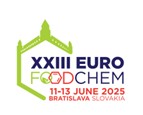Vedecký časopis - archív
Journal of Food and Nutrition Research
Súhrny čísla 4 / 2019
Damin, F. – Meinhart, A. – Caldeirao, L. – Filho, M. –
Determination of rutin in fruits and vegetables in natura
Journal of Food and Nutrition Research, 58, 2019, č. 4, s. 328-338
Fernanda Damin, Department of Food Science, School of Food Engineering; University of Campinas, Monteiro Lobato Street 80, 13083-862 Campinas, Brazil. E-mail: fernanda.damin@hotmail.com
Received 6 June 2019; 1st revised 22 September 2019; accepted 11 October 2019; published online 19 November 2019
Súhrn: Rutin is one of the phenolic compounds that have aroused interest due to the beneficial effect in reducing the risk of degenerative diseases, therefore, it is extremely important to investigate new natural sources of this compound. The objective of this study was to evaluate the rutin content in edible parts of 324 plant samples, comprising 117 different fruits and vegetables commercialized in Brazil. Rutin was detected in
Kľúčové slová: phenolic compounds; flavonoids; rutin; liquid chromatography; antioxidant
Na stiahnutie:
jfnr201936.pdf (PDF, 339.4 Kb, 3028x)










